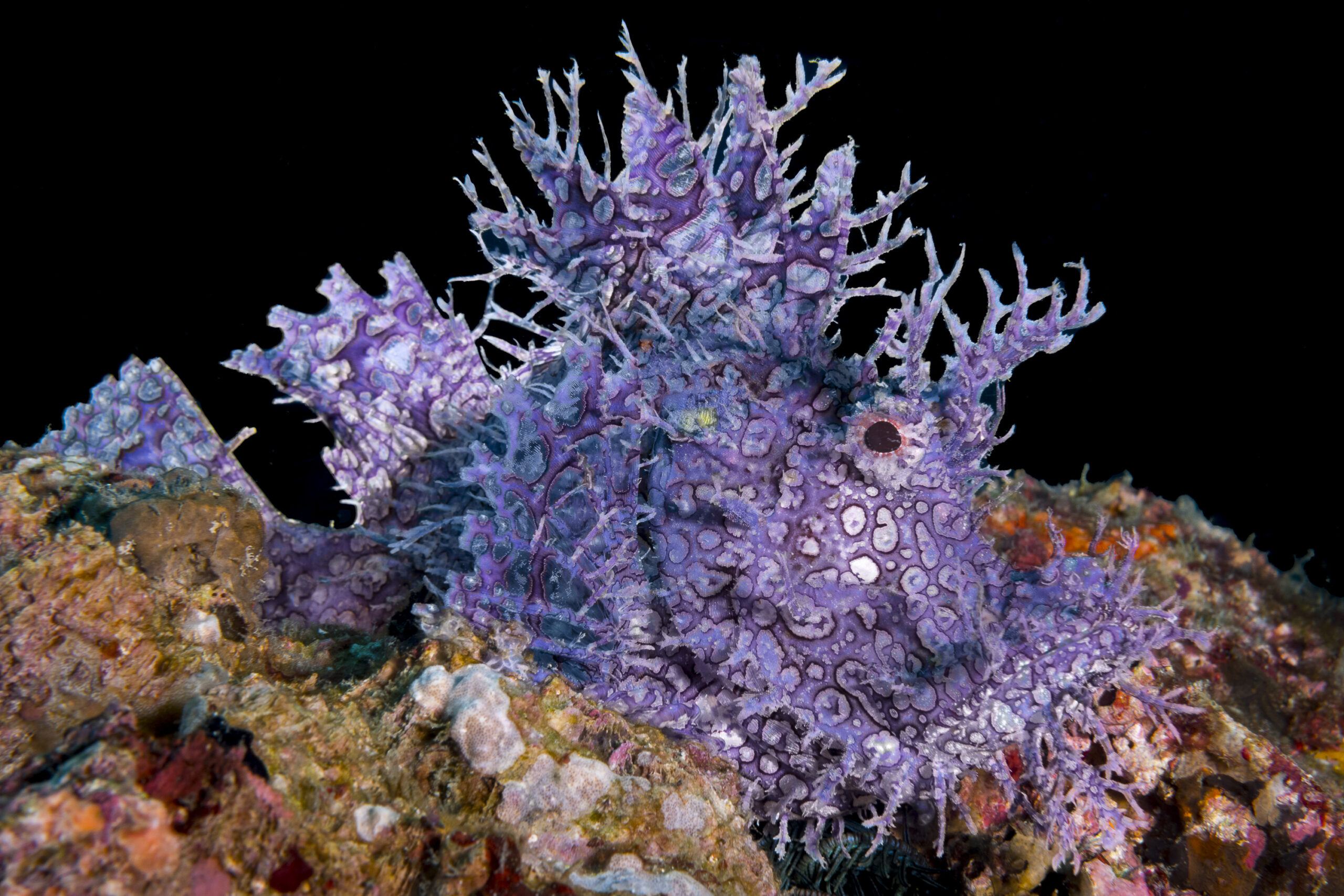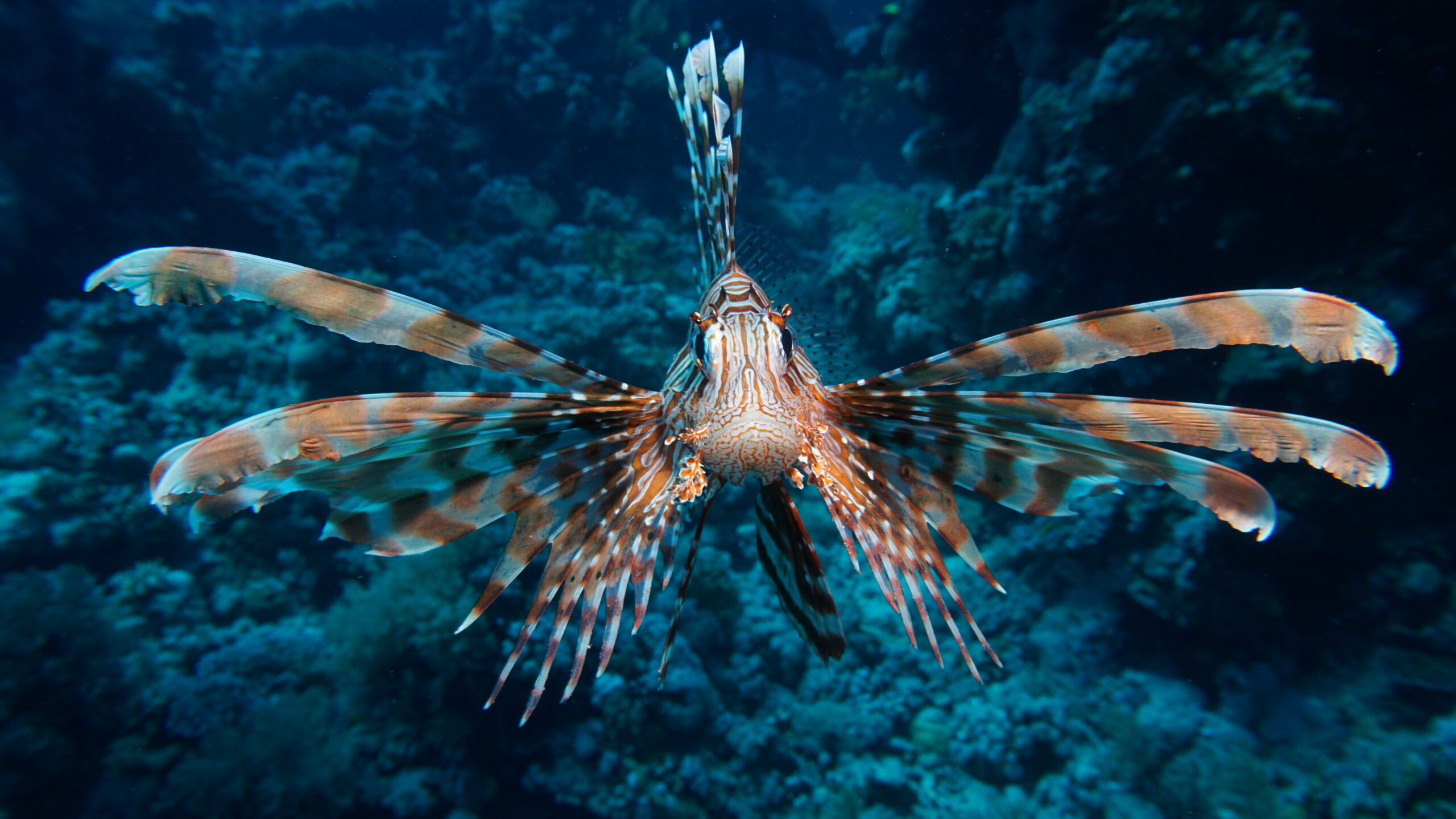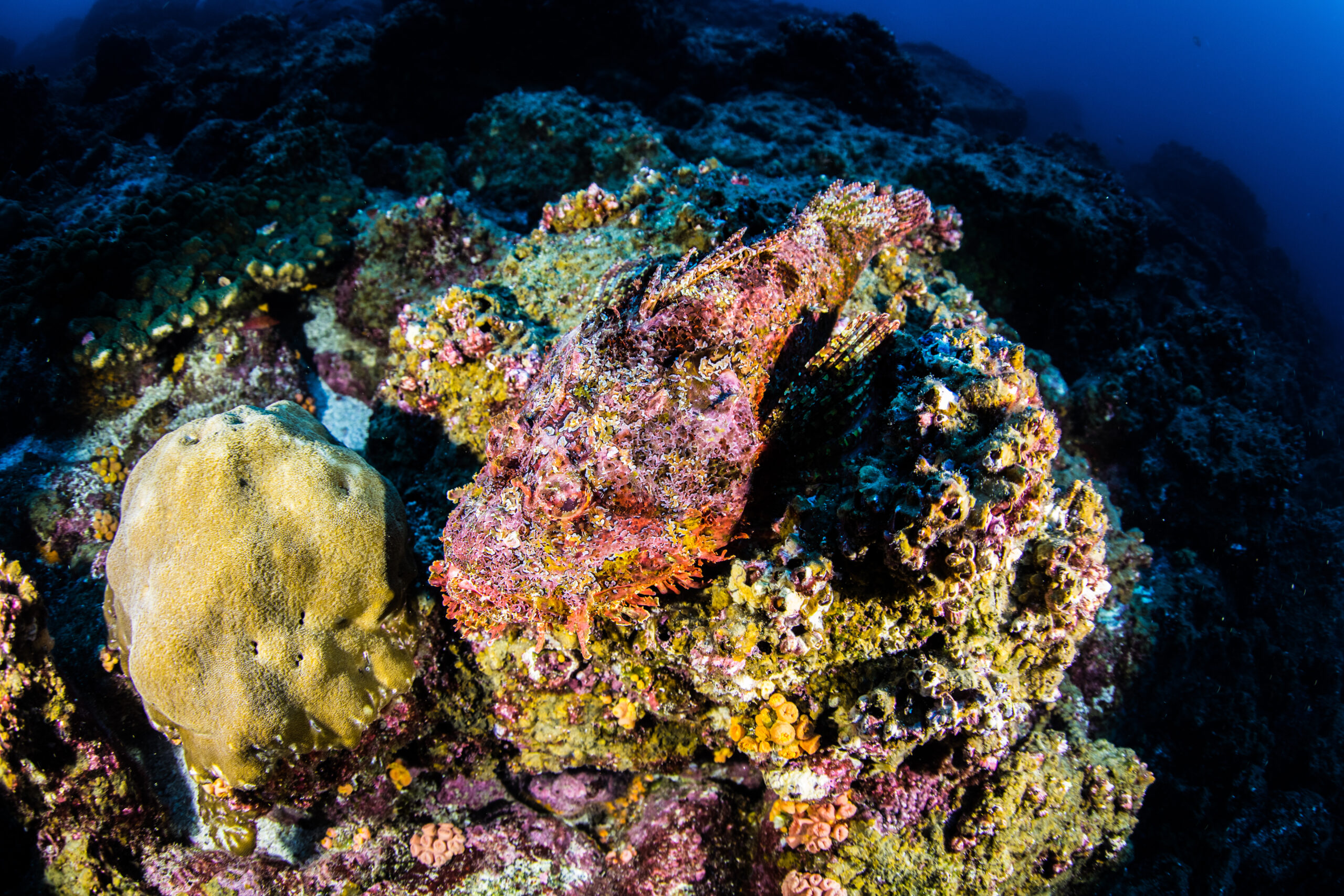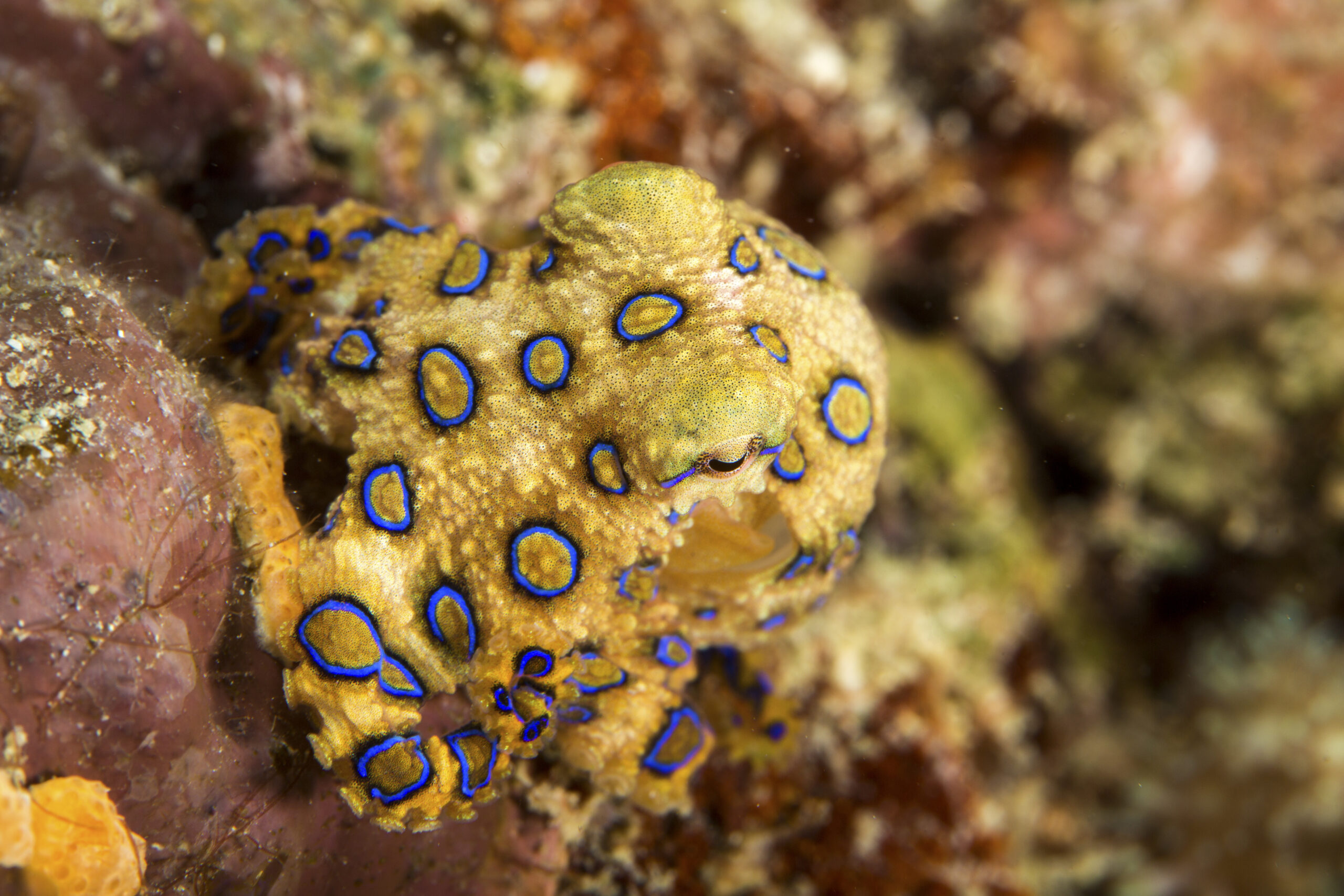The Difference Between Venomous and Poisonous
Not all toxins are the same

You may have heard warnings to stay away from venomous or poisonous critters—but do you know what those terms actually mean? “Venom” and “poison” are often used interchangeably because both are toxic substances that can cause severe harm (and even death!), but the words “venomous” and “poisonous” imply completely different things. Understanding the difference is important, because it has implications for how you interact—or don’t—with those organisms. We’re here to clear up the confusion, and share some examples of both venomous and poisonous ocean animals.
Venom vs. Poison
The difference is simple: Venom is injected. Poison is ingested.
Venomous animals often possess a specialized body part, like fangs, spines, stingers, barbs and other generally sharp and unpleasant tools, that allow the animal to puncture the skin of their opponent to inject venom. Once the animal breaks the skin, a rush of venom travels from a gland that stores the toxin in a process called envenomation. Because venom needs to be injected, technically most animal venoms could be touched or even swallowed without negative effects (but DO NOT try that at home!)

Poisonous animals, on the other hand, coat part or all of their body in a toxic substance, so they’re harmful to touch or eat. Some animals create and secrete their own poison, while others gain their poison by eating toxic prey. Many poisonous animals use their toxin for defense rather than offense—it’s a way to dissuade predators from eating them!
Venomous Ocean Animals
There are more venomous animals in the ocean than you might think—although most pose no harm to humans as long as you give them their space! All octopuses, as well as some cuttlefish and squid, are venomous, and mostly use their venom to hunt and kill their prey. Jellyfish can also be venomous, and use a harpoon-like stinging cell called a nematocyst to inject their prey. The tiny Australian box jellyfish is considered the most venomous animal in the sea—their sting can cause cardiac arrest, paralysis, or death in humans in just a few minutes.

There are over 1,200 venomous fish in the ocean, too, including stingrays and lionfish. Lionfish, and invasive species in the Western Atlantic, Caribbean and Gulf of Mexico, have a series of venomous spines lining their back that can cause pain and swelling upon envenomation. Their cousin, the stonefish, is the most venomous fish in the world, and their stings can be fatal if left untreated.
Poisonous Ocean Animals
Just like some land animals, some of the most colorful organisms in the sea are poisonous. Nudibranchs, often referred to as sea slugs, use their bright colors to warn predators that they should stay away. Since nudibranchs lack other defenses (like a shell), some use toxins to avoid being eaten. Some produce their own poison, while others consume those of sponges or anemones to use as their own.

Puffer fish, also known as blowfish, are also poisonous—but that doesn’t stop humans from eating them. Although one puffer fish contains enough tetrodoxin to kill 30 people, the fish is considered a delicacy in Japan. Only highly trained chefs who know how to avoid the poison are allowed to prepare the fish.
Bonus: Blue ringed octopuses are overachievers—they’re both venomous and poisonous! Its venom is 1,000 times more powerful than cyanide, and this golf-ball sized powerhouse packs enough venom to kill 26 humans within minutes. Also, they’re poisonous if eaten. Best to avoid those guys altogether.
